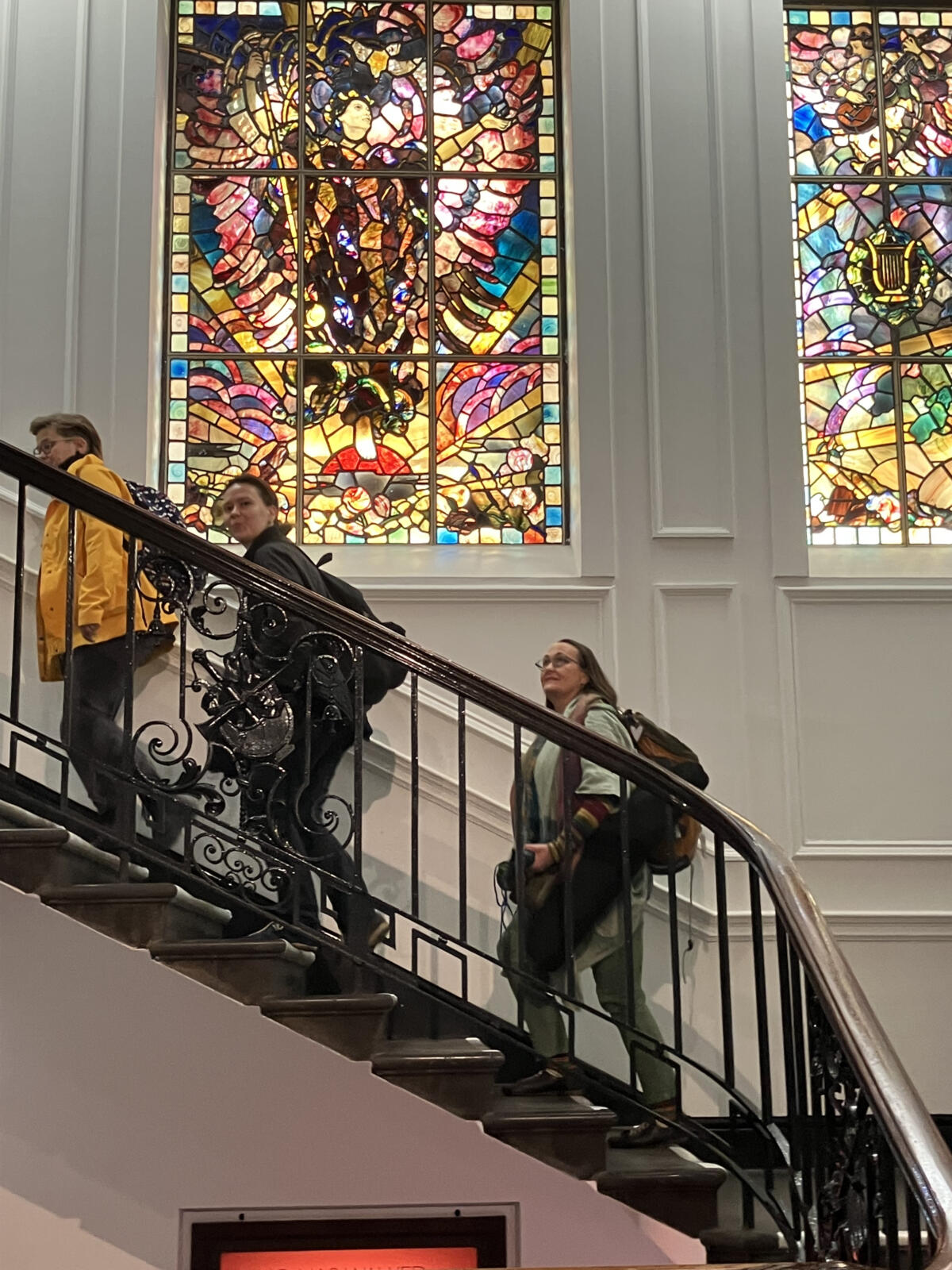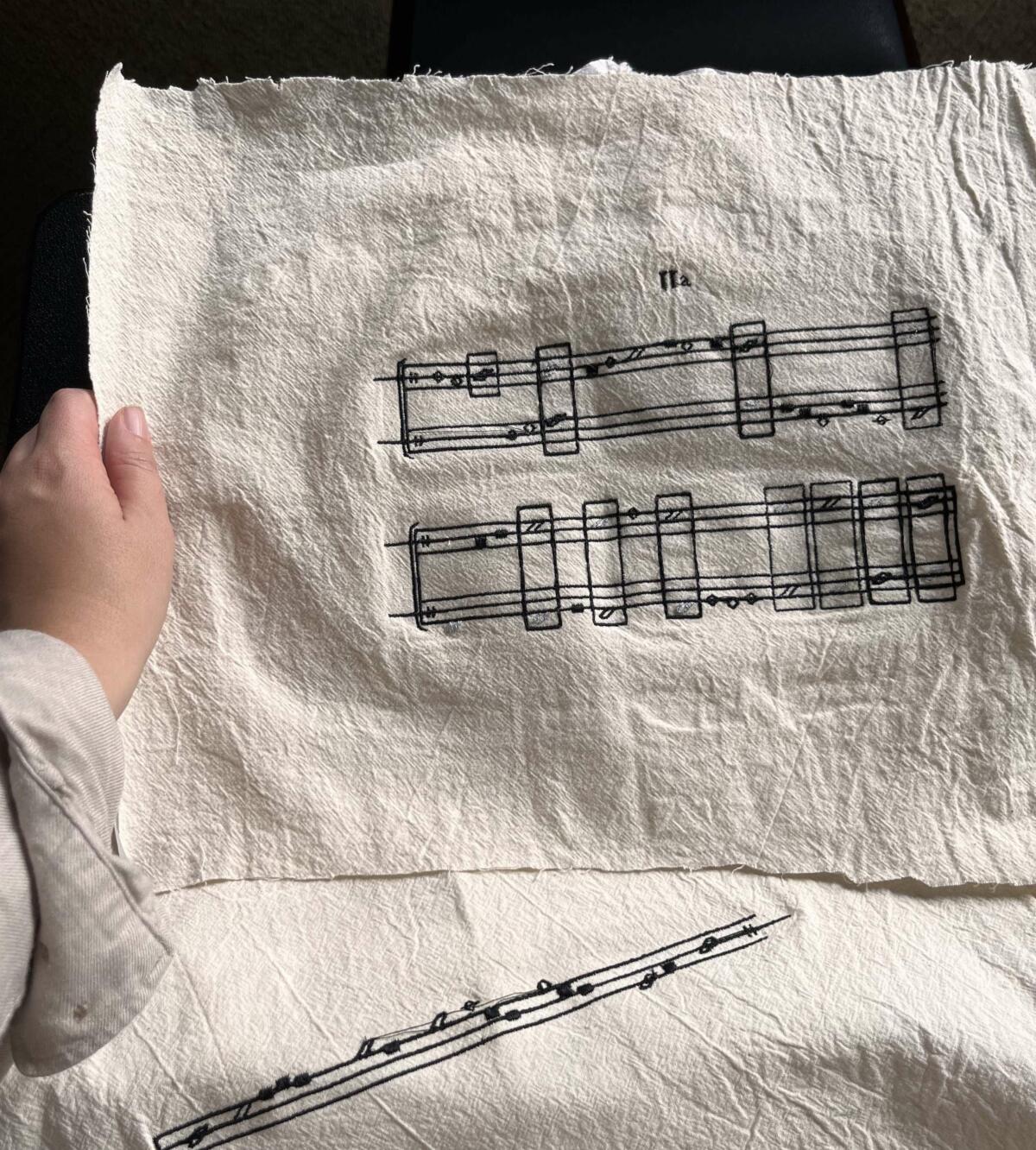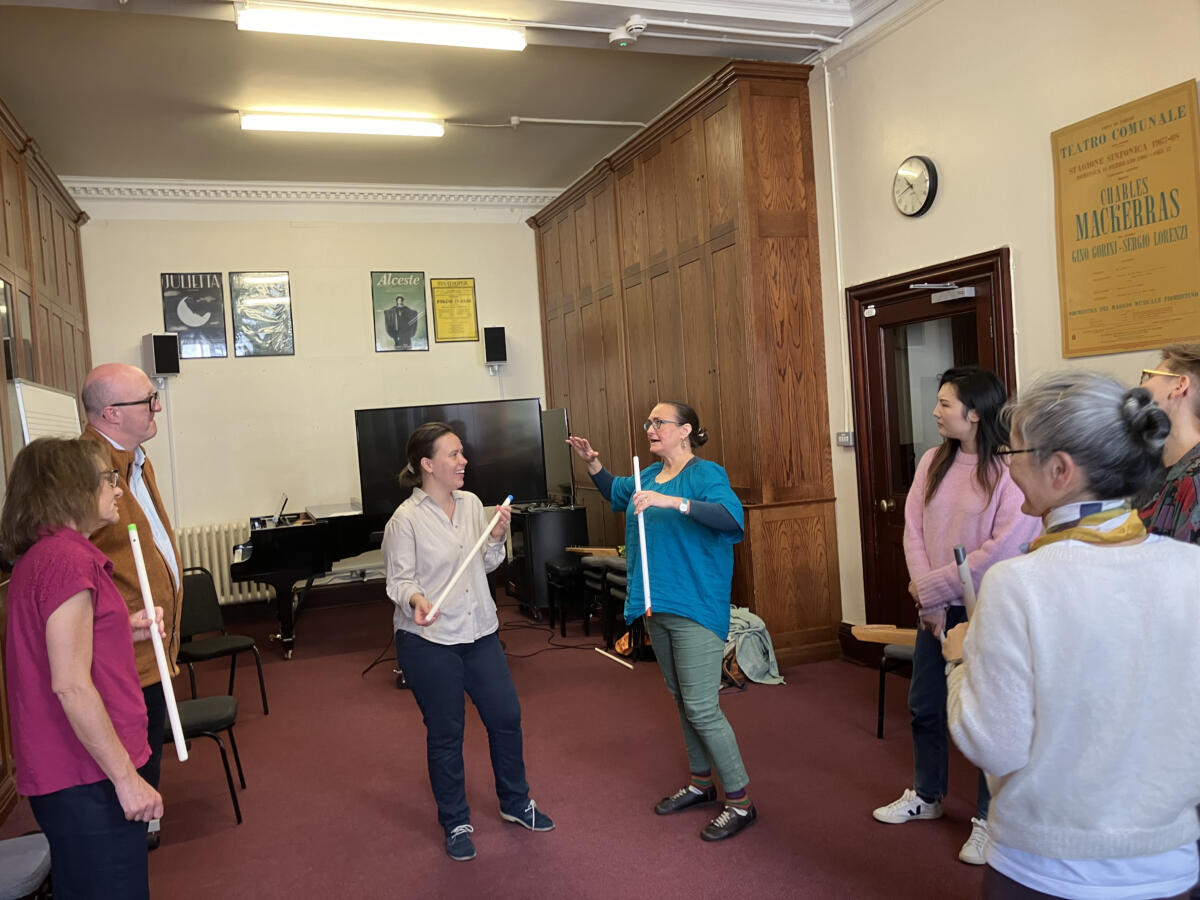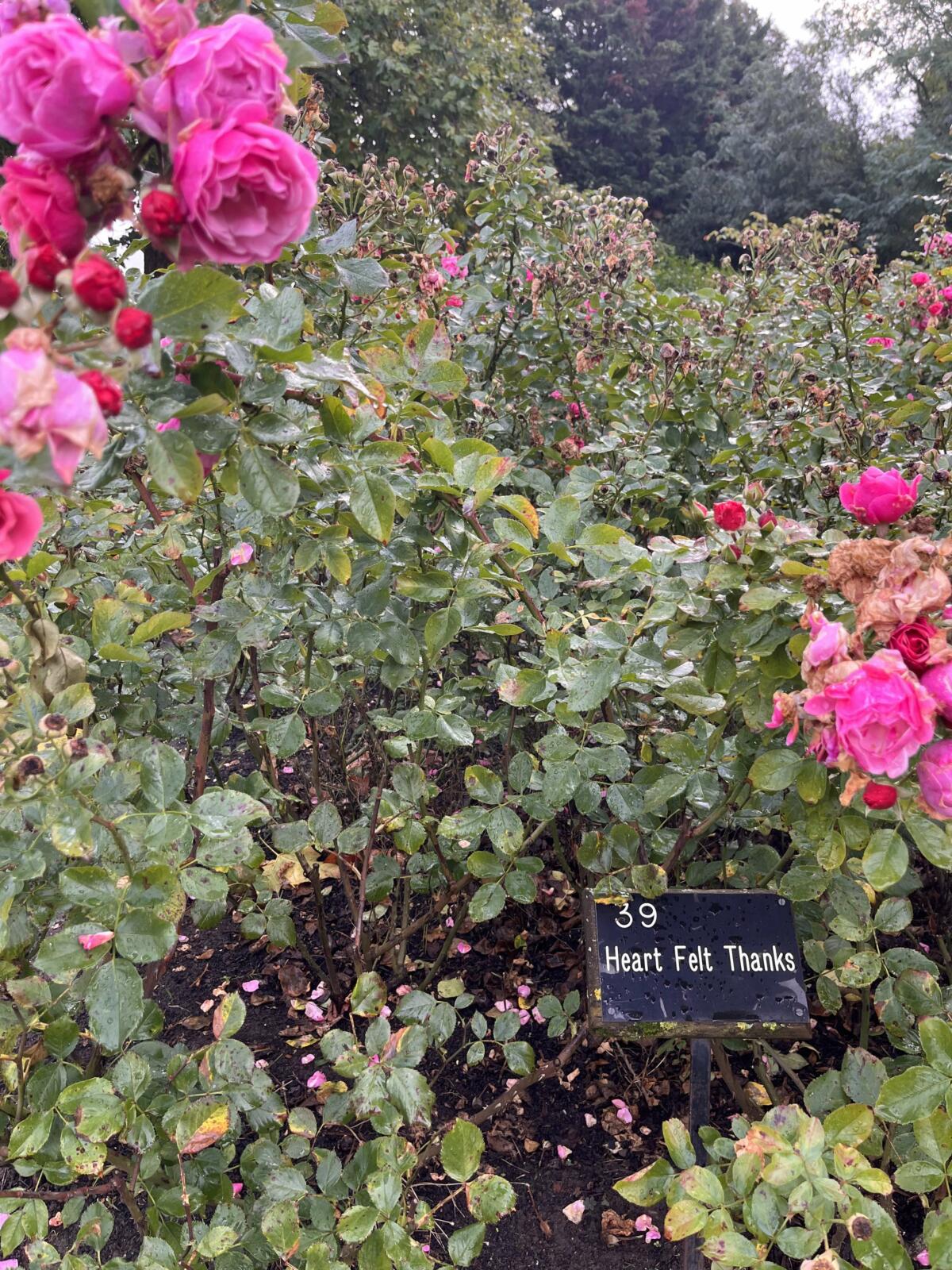Between thinking and doing: Collaborative Reflections from the SibA+RAM Study Day in London
Each year, the Sibelius Academy and the Royal Academy of Music (RAM), London, organize a two-day Study Days dedicated to artistic research. During these events, selected doctoral researchers from both institutions meet, present their work, and exchange ideas.
This October, we were the lucky ones to have the opportunity to travel to London with professor Mieko Kanno and university lecturer Päivi Järviö, where we met Zhenyan Li, Matthew Schellhorn, and Andrea Balency-Béarn, three artistic research fellows from the Royal Academy, as well as senior postgraduate tutor Sarah Callis and professor David Gorton. The goal for this year’s event was for each of us to present our work, prepare workshops, and engage in discussions on topics related to our research.
Though the six of us came from different backgrounds and institutions, with research topics that seemed quite distinct, it was eye-opening to discover how many common issues, questions, and interests we shared. Artistic research may seem like a solitary pursuit, spending long hours in front of a laptop, a score, or immersed in thought (sometimes lost!), but it also offers opportunities to connect with fellow musicians and artists who share a passion for challenging and rethinking the boundaries of music and music-making.
The trip gave us the possibility to reflect outside of our usual contexts, and provided fresh perspectives and new angles to our work. Our discussions and workshops not only deepened our understanding of our individual research but also broadened our collective perspective. It was nice to see that many questions and interests were shared; at the same time, having the chance to reflect outside of our ‘habitat’ and usual context offered several precious new angles and points of reflection. We travelled back home with a broader perspective and with a few new thoughts.

We’d like to share a few personal reflections from each of us, hoping to inspire others engaged in the artistic process to step out, connect, and collaborate.
Livia Schweizer
Livia: I’m a second-year doctoral researcher in the MuTri doctoral school, and my focus is on how text and graphic scores can be used to foster intercultural and interdisciplinary collaborations. The three days in London and at the Royal Academy were fantastic! It is nice to sit down now and re-think about it, realizing how meaningful it can be to spend some time in a new environment with people sharing a similar passion. The days we spent in the Academy were ‘only’ two, but the days were long and filled with discussions and workshops to attend and to give!
When giving the workshop I realize that whenever you present your research idea or a workshop in a place, the context, environment and people’s different visions play such a crucial role in what is seen as interesting and relevant in the work. Going through some text and graphic score together with ‘my group’ made me realize how every group and person reacts differently to the given material. What can seem obvious to you might not be for the other one, and at the same time, the other one could point out things that you have
overlooked, even if they have always been there. Exactly as an open score where indeterminacy is welcomed and affecting the result, a new context is going to bring new question marks and new answers. A small funny example: when playing one of Pauline Oliveros’ score that asks for ‘a sound that is blue for you’, I learned that in England ‘blue’ can be a synonym of ‘rude’. I had no idea about it, and the thing became funny when I realized that in my personal imagery a blue sound felt as a warm, woolly deep, dense tone, while for someone else a ‘blue tone’ might be a sort of ‘sonic insult’ – it took me a travel to London to include in my idea of blue a new tonality of it!
At last, this was also my very first time in London, and I managed to fall in love with what I saw, and with the tea bags that I could bring back home. It might sound as a pure clichè, but if you go to London, do find some good tea to bring back home: you won’t regret it. I just regret not getting more of it. Also, if you have the chance, go to have a walk to the Queen Mary’s Rose Garden behind the Royal Academy, you will find some beauties over there.
Leena Julin
It is my fourth year at the DocMus Doctoral School, where I am engaged in artistic research, exploring shared humanity in secular and Christian cultures. I was thrilled to embark on this journey, not knowing exactly what awaited me, other than meeting people from diverse backgrounds—an experience that typically brings interesting and unexpected impacts on one’s work and thoughts.
During the Study Day, I held two workshops. The first one focused on testing different notation styles in practice. My interest lies in listening-based music-making, which I am trying to facilitate through notation and other external means, such as various materialities. We concentrated on a notation system I have developed: a three-line staff with relative notation, which can be easily realized regardless of the instruments available. I was delighted that everyone eagerly participated with their voices, even though singing was not their primary instrument (if it was on their list of instruments at all). We also discussed the possibilities and limitations—both practical and mental—that notation can offer, considering what should be notated, how, and why, and how to create accessible or “flexible” music.

My second workshop focused solely on discussing and contemplating on the concept and terminology behind my practice, including topics like presence, perception, and signal and noise. We talked about what we take with in the music making, what’s considered or noticed as “usual” or “normal”, and what’s being left out.
It was fascinating to see how different our approaches are, and also how challenging it can be to communicate differing understandings. Undoubtedly that is anyway the only way: first of all, to take into consideration the variety of approaches out there, and secondly, to formulate the arguments behind my decisions and my way of working.
In regard to London, it is such a versatile city you can just wonder around and there is always something to see, hear and experience. Walking from vivid city streets into a calm, green park, suddenly finding yourself in a gallery with an amazing exhibition, what could be better!
Sanna Vuolteenaho
Before our meeting in London, we had an online meeting where each of us shared the background of our projects and a bit about ourselves. After the Zoom meeting, I felt quite exhausted from the focused listening, and with a bit of a racing heart, I prepared for the trip. How would I manage to be effective and present for two long days, understanding others, offering my perspectives, and opening up my own?
However, my doubts turned out to be unfounded: it is an entirely different experience to be in the same space with people than to be looking at two-dimensional face boxes on Zoom! Communication and interaction happen in so many different ways when we are together live. The Study Day had a positive and appreciative atmosphere – listening and engaging. I always feel a bit nervous speaking in English and expressing myself, but in this group, it was not a barrier at all. The size of the group was just intimate enough to create a trusting and safe atmosphere. Just two days, but such a deep dive into each other’s projects and reflections.
I was able to lead a 90-minute workshop at the start of our days, related to my concert. After a short physical warm-up through vocal improvisation with the overtone scale, I introduced the overtone flute. My next doctoral concert will take place at an art gallery featuring an indigenous exhibition. Using an image of one artwork from the exhibition, we did a small improvisation with overtone flutes, voice, and small percussion instruments.

I also initiated a discussion on a topic relevant to me: issues of cultural appropriation and other ethical considerations related to conducting research. My question is how we can create and develop respectful and ethical art while working with cultures and artistic traditions that are unfamiliar to us and with which we have no direct cultural connection. The challenge lies in finding ways to collaborate and engage without appropriating or misrepresenting these cultures, ensuring that our art/musical improvisations remain both authentic and respectful. I have been thinking that if something feels difficult or scary, should we avoid it for fear of making mistakes? Or should we face all situations openly, honestly, and with curiosity?
As a result of the Study Day, I have learned new things about debating. The people at the RAM are brave in asking questions and even in challenging ideas; they are definitely more courageous than I am. But I have gained strength. I have found the courage to stand behind my thoughts without panic, even if someone thinks differently. What I do is not strange or odd. And it also interests others.
By the way, it doesn’t always rain in London! We had the delightful opportunity to experience a splendid 90-minute lunch break in the heart of the city, which included a lovely walk in a beautifully illuminated garden right behind the Royal Academy of Music.

Overall, it was really fascinating and nice to notice how the topics of ‘notation’ and ‘ownership’ of a piece came out in different forms and ways with everybody in the various workshops and discussions. Why and how we write and make music today was a topic that emerged in different ways throughout the two days. With Zhenyan we worked on one piece based on the idea of a ping-pong match and another based on Chinese notation; Matthew, Andrea and Sanna presented a piece based on objects found in the instrument museum of the Royal Academy; Andrea turned a duo into a trio processing the sound from Zhenyan’s Chinese flute and Sanna’s overtone flute; Livia engaged people to express a text score from their own premises; Leena brought her own alternative notations on plywood and textile, and followed it with a reflection on how we may notate music that encourages us to feel timelessness;
Sanna made us all reflect and discuss the challenging but important topic of appropriation and researcher’s (and artist’s) ethics.
It was said in our closing reflection that Finnish team brought with them a sense of community. In contrast, we noted that the RAM participants clearly excelled in debating and discussing. In addition to good discussions, we got to enjoy making music and testing new things together, playing and being playful with some new instruments and concepts, and got to know new inspiring colleagues!
Those English roses can tell better how thankful we are for those sunny and inspiring days in London:

Artistic Research
Artistic research is one of Uniarts Helsinki’s specialities. In this blog you can read about latest activities in the field from our community and guest writers.
Taiteellinen tutkimus on yksi yliopistomme erityispiirre. Lue blogista yliopistoyhteisömme ja vierailijoiden kirjoituksia ja ajatuksia taiteellisen tutkimuksen ajankohtaisista ilmiöistä ja tapahtumista.
Latest posts
-
Weaving Connective Threads: Doctors in Performance 2025 Reflections
-
What does a doctoral project in Artistic Research look like?
Follow blog